Away Waste Knot Start
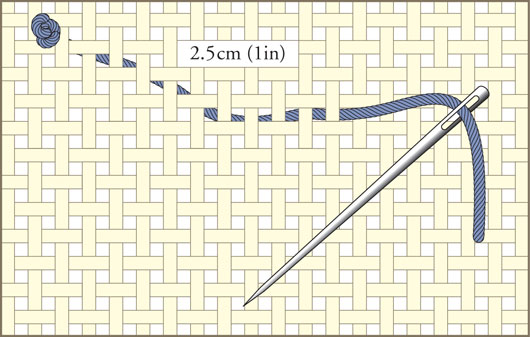
Start this way if working with an odd number of strands or when tweeding threads (where you use one strand each of two or more colours to achieve a mottled, tweedy appearance), or if you are a real perfectionist!
1 Thread your needle and make a knot at the end. Take the needle and thread through from the front of the fabric to the back and come up again about 2.5cm (1in) away from the knot.
2 Now either begin cross stitching and work towards the knot, cutting it off when the threads are anchored, or thread the end into your needle and finish off under some completed stitches. Avoid using this method with black thread as it may leave a shadow on the fabric.
Backstitch Outlining
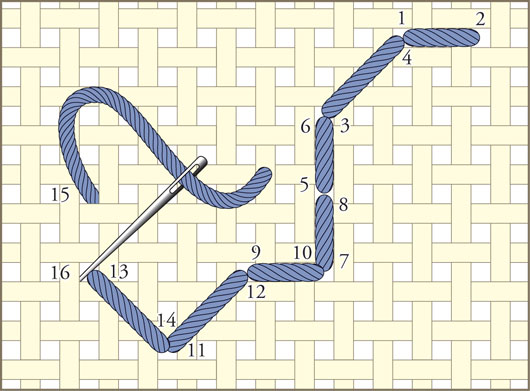
Backstitching is a personal thing. Sometimes it is essential to the project because without it, you wouldn’t be able to recognize the finished piece! It is used to add definition to a motif or for details like cat’s whiskers or ship’s rigging.
Try using subtle shades for backstitch to avoid a hard edge to the cross stitches and avoid black unless needed for wrought iron or similar motifs.
- Generally, use one strand of stranded cotton and a slightly smaller needle size for backstitch outlining.
- Work backstitch after all cross stitching has been completed, to avoid breaking up the backstitch line.
- Work backstitch over individual blocks on Aida or pairs of threads on evenweave and avoid working long stitches unless it is appropriate or unless you are deliberately aiming for a ‘sketchy’ backstitch style which does not follow the cross stitch neatly.
Fractional Cross Stitches
Quarter and three-quarter cross stitches enable us to create curves and smoother lines. The stitch creates a triangular shape allowing for more detail within small motifs. These stitches are less easy to form on Aida because the needle passes down the central hole in the thread group. When forming these stitches on Aida, a ‘sharp’ needle is helpful.
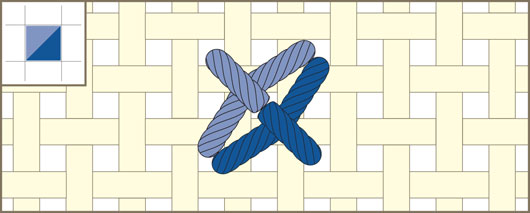
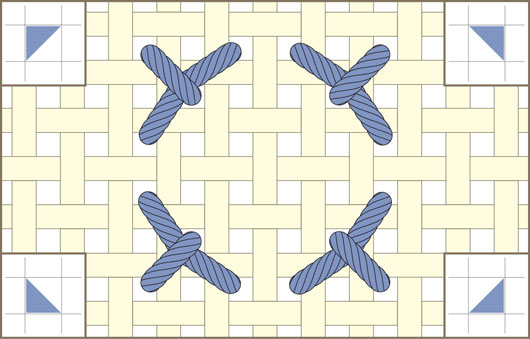
Work the first half of the cross stitch as usual, sloping the stitch in the direction shown on the chart .Work the second, quarter stitch over the top and down into the central hole to anchor the first half of the stitch. Personally I do not use quarter stitches and prefer when cornered to use two three quarters as shown in the diagram.
Changing Threads and Finishing Off
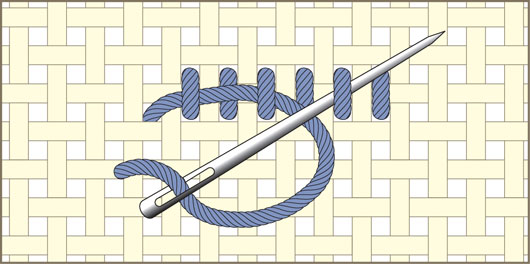
Changing threads and finishing your work off correctly will pay dividends, creating a neat appearance and a safe, lasting piece of stitching. At the back of the work, pass the needle under several stitches of the same or similar colour and then snip off the loose end close to the stitching.
When a group of stitches or a length of thread is completed, finish off the end carefully before starting a new colour. Don't leave small loose ends, which have a nasty habit of pulling through to the right side!